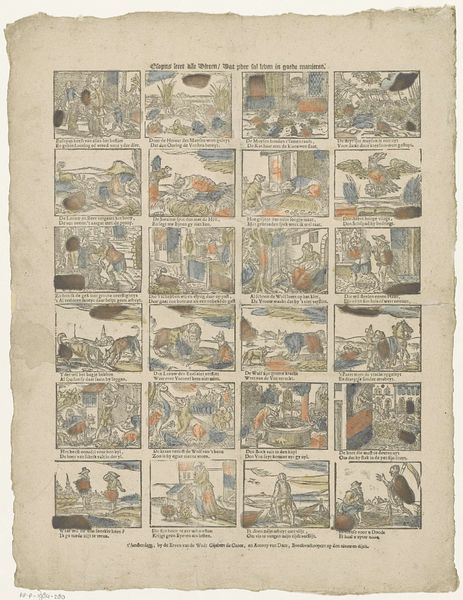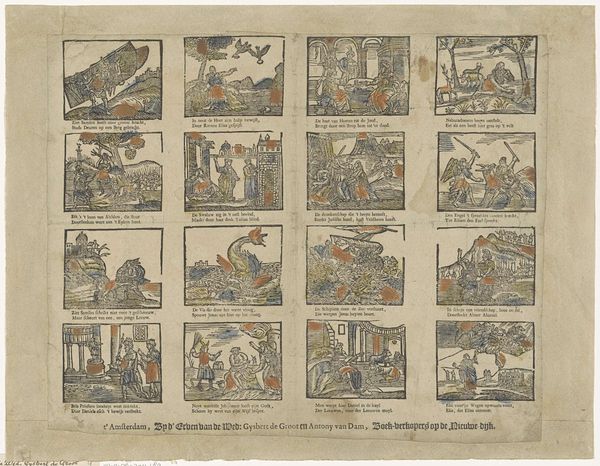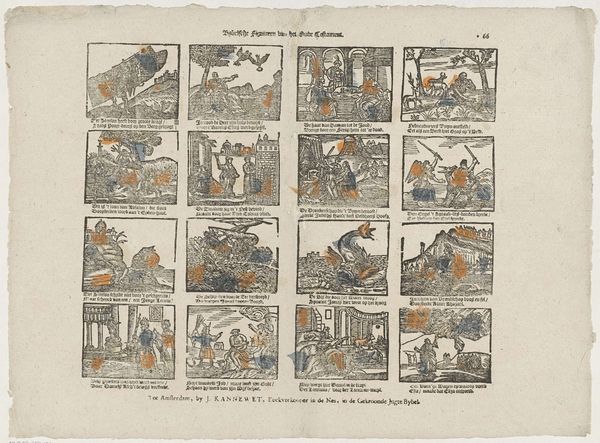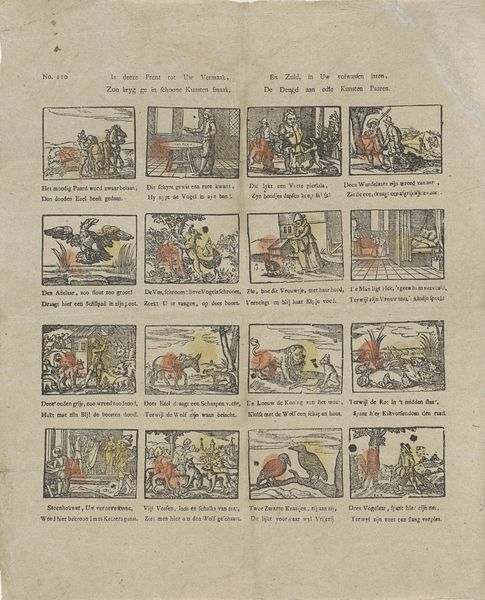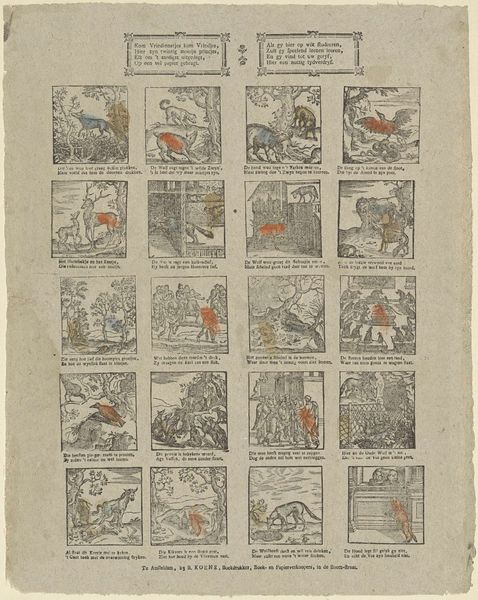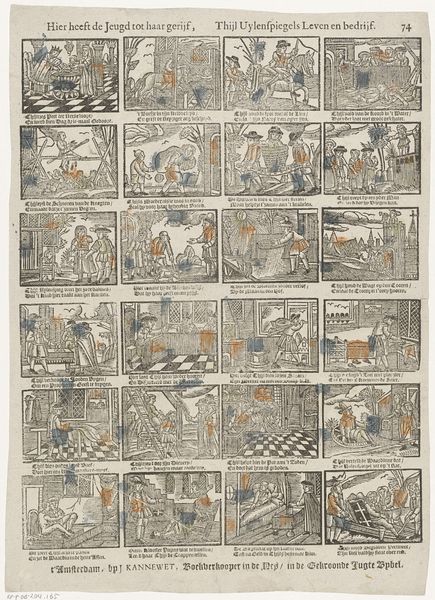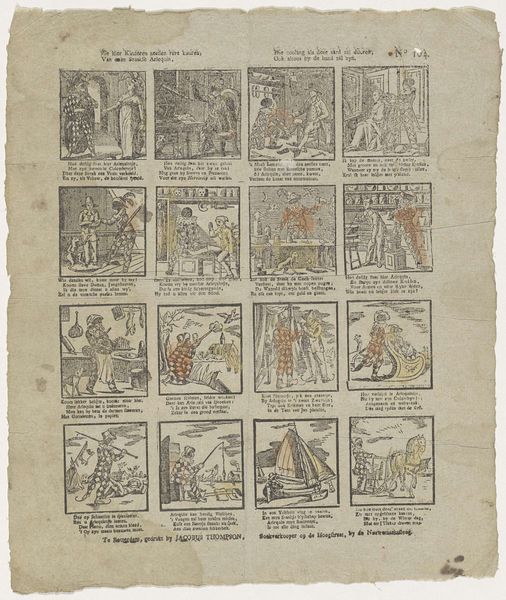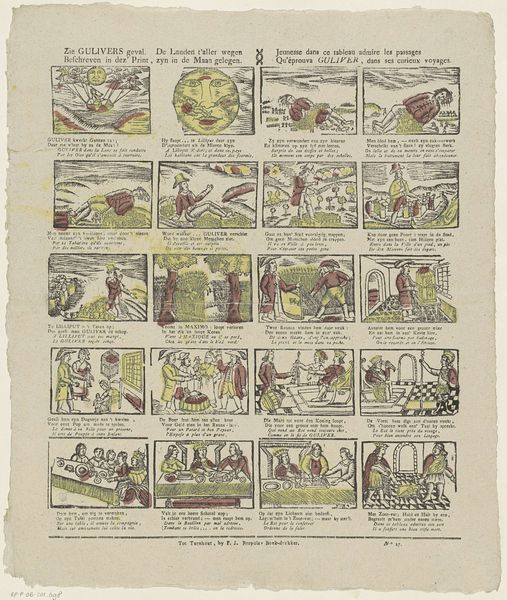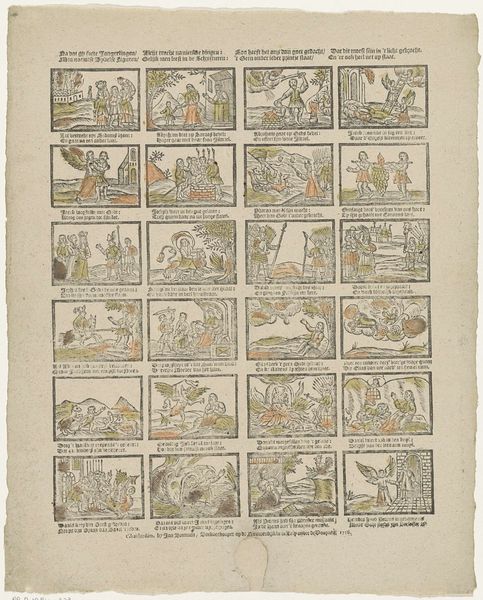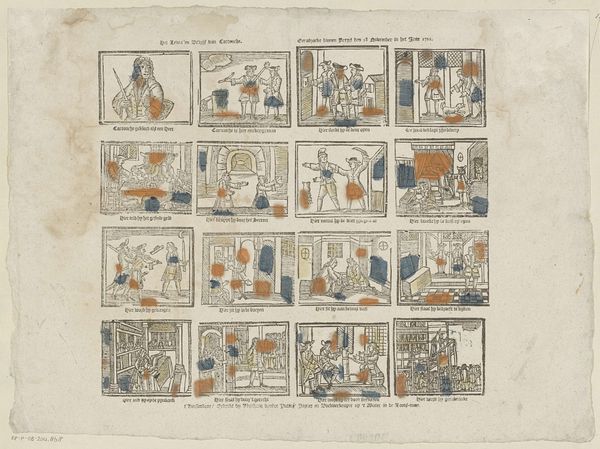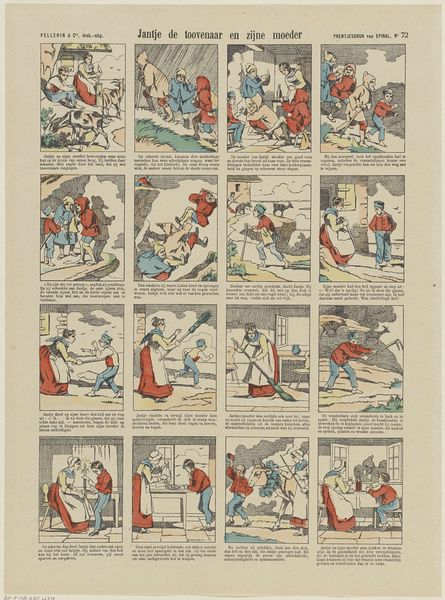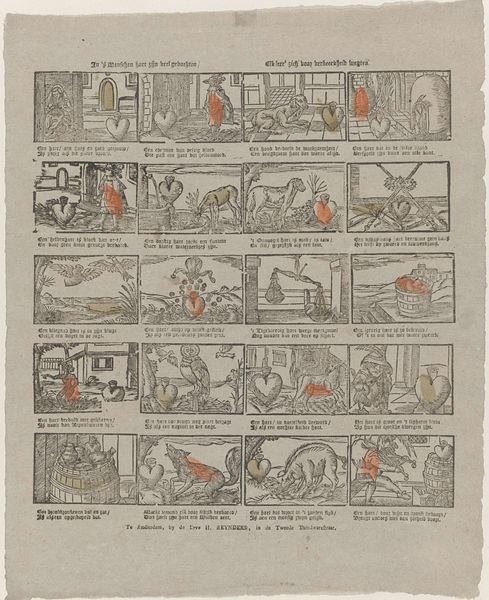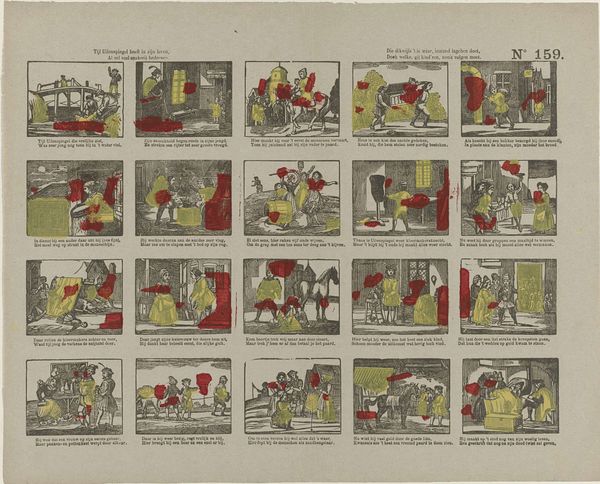
Levendigen af-beeldzels van verscheyde bybelsche historien 1725 - 1780
0:00
0:00
print, engraving
#
narrative-art
#
baroque
# print
#
history-painting
#
engraving
#
miniature
Dimensions: height 413 mm, width 316 mm
Copyright: Rijks Museum: Open Domain
Curator: Immediately striking is the compositional layout—a series of miniature narratives presented in grid form, unified yet individually captivating. Editor: Here we have "Levendigen af-beeldzels van verscheyde bybelsche historien," a print attributed to Johannes (II) Kannewet, created sometime between 1725 and 1780. It's currently part of the Rijksmuseum's collection. Looking closely, it seems to be an engraving, possibly enhanced with some later hand-coloring. Curator: The use of line is particularly noteworthy, isn't it? Each small image employs hatching and cross-hatching to generate depth and shadow, while simultaneously flattening the representational space. Editor: Agreed, although to me it reveals much about printmaking workshops. These miniature scenes, presumably depictions from Biblical stories as the title suggests, seem almost mass-produced. I wonder about the division of labor and how many artisans were involved in churning out prints like this. Curator: I think the semiotic interplay is more important than the context. Each frame functions as a signifier, a condensed allegory inviting viewers to decode deeper spiritual meanings through close, almost meditative contemplation. Note how each segment functions as a world unto itself with distinct iconographic codes that signal their narratives. Editor: But surely the purpose and means of dissemination affected that interpretation! Prints such as these are quite democratic by allowing a broader section of society to access imagery and narratives typically confined to elites through larger history paintings. Its scale and mode of production would inform its reception, altering that meditative aspect that you mentioned. Curator: You know, perhaps, that intersection between material accessibility and semiotic richness creates its distinctive Baroque tension. Its cheap mode of making makes grand historical narratives more available to those from the common masses who may learn something from a symbolic religious parable. Editor: Indeed, recognizing the material circumstances enriches our appreciation. It gives the work meaning not only as a product of skilled labor but as a cultural artifact shaped by its means of distribution, audience and purpose. It truly embodies the spirit of its age, and yet is so particular to it. Curator: In that sense, tracing this single piece does unravel different facets of artistic, religious, and societal values during that period. Editor: Precisely—a tangible and valuable lens through which to study cultural production, the lives of makers, and consumer culture!
Comments
No comments
Be the first to comment and join the conversation on the ultimate creative platform.
